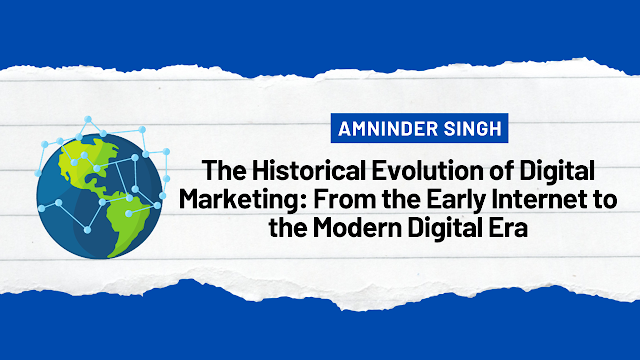In the 21st century, digital marketing has become an integral part of the business landscape, revolutionizing how companies promote their products and connect with their target audiences.
To understand the significance of digital marketing today, it’s essential to trace its historical evolution from its inception to the dynamic and multifaceted field it has become.
The Birth of the Internet and Early Digital Advertising
The journey of digital marketing began with the birth of the internet in the late 20th century.
In the early 1990s, the World Wide Web emerged, laying the groundwork for the digital marketing landscape we know today.
During this nascent phase, digital marketing primarily consisted of rudimentary banner advertisements on websites.
1. Web Banners: The first-ever digital advertisements were static web banners, which served as digital billboards on websites.
These banners lacked the interactivity and targeting capabilities we have today but marked the beginning of online advertising.
The Rise of Search Engines and Search Engine Optimization (SEO)
The late 1990s saw the proliferation of search engines, most notably Google, which would later become a dominant force in digital marketing.
With the rise of search engines came the need for businesses to improve their online visibility.
This led to the birth of search engine optimization (SEO).
2. SEO: SEO aimed to optimize websites to rank higher in search engine results. Early SEO tactics were basic, focusing on keywords and meta tags.
However, as search engines became more sophisticated, SEO evolved into a complex field involving on-page and off-page optimization, technical SEO, and user experience considerations.
The Dot-Com Boom and Email Marketing
The late 1990s and early 2000s witnessed the dot-com boom, a period of rapid growth in internet-based businesses.
This era saw the emergence of email marketing as a prominent digital marketing strategy.
3. Email Marketing: Email marketing involved sending promotional messages to a list of subscribers.
While some early email campaigns were spammy, the industry soon recognized the importance of delivering relevant and valuable content to subscribers.
Social Media’s Advent and the Era of Content Marketing
The mid-2000s brought the emergence of social media platforms, which would go on to reshape digital marketing strategies.
4. Social Media Marketing: Platforms like Facebook, Twitter, and LinkedIn became integral to digital marketing efforts.
Businesses started using social media to engage with their audiences, build brand awareness, and promote products and services.
5. Content Marketing: As consumers increasingly sought valuable and relevant content online, content marketing came to the forefront.
Brands began creating blogs, videos, infographics, and other forms of content to attract and educate their target audiences.
Mobile Marketing and the Smartphone Revolution
With the widespread adoption of smartphones in the late 2000s, mobile marketing gained prominence.
6. Mobile Marketing: Mobile marketing encompassed strategies such as mobile app marketing, SMS marketing, and optimizing websites for mobile devices.
Marketers recognized the need to reach consumers on their mobile screens, where they spent a significant portion of their time.
The Era of Data-Driven Marketing and Personalization
In the 2010s, data-driven marketing became increasingly prevalent, fueled by advancements in analytics and technology.
7. Analytics and Data Analysis: Marketers now had access to a wealth of data, allowing them to measure campaign performance, track user behavior, and make data-driven decisions.
A/B testing, conversion rate optimization (CRO), and predictive analytics became standard practices.
8. Personalization: With data insights at their disposal, businesses began personalizing marketing messages and experiences for individual consumers.
Personalization enhanced engagement and conversion rates.
The Present and Future of Digital Marketing
Today, digital marketing is a multifaceted field that includes search engine optimization, content marketing, social media marketing, email marketing, paid advertising (such as Google Ads and social media ads), influencer marketing, and more.
It continues to evolve, with emerging technologies like artificial intelligence, augmented reality, and voice search shaping its future.
Digital marketing has become an indispensable tool for businesses worldwide, enabling them to connect with audiences on a global scale, drive targeted engagement, measure ROI, and adapt to changing consumer behavior.
As technology continues to advance, the historical evolution of digital marketing serves as a testament to its adaptability and enduring relevance in the ever-changing digital landscape.
It will undoubtedly continue to play a pivotal role in how businesses market themselves in the years to come.
This Article is Part of Our Digital Marketing Introductory Series

